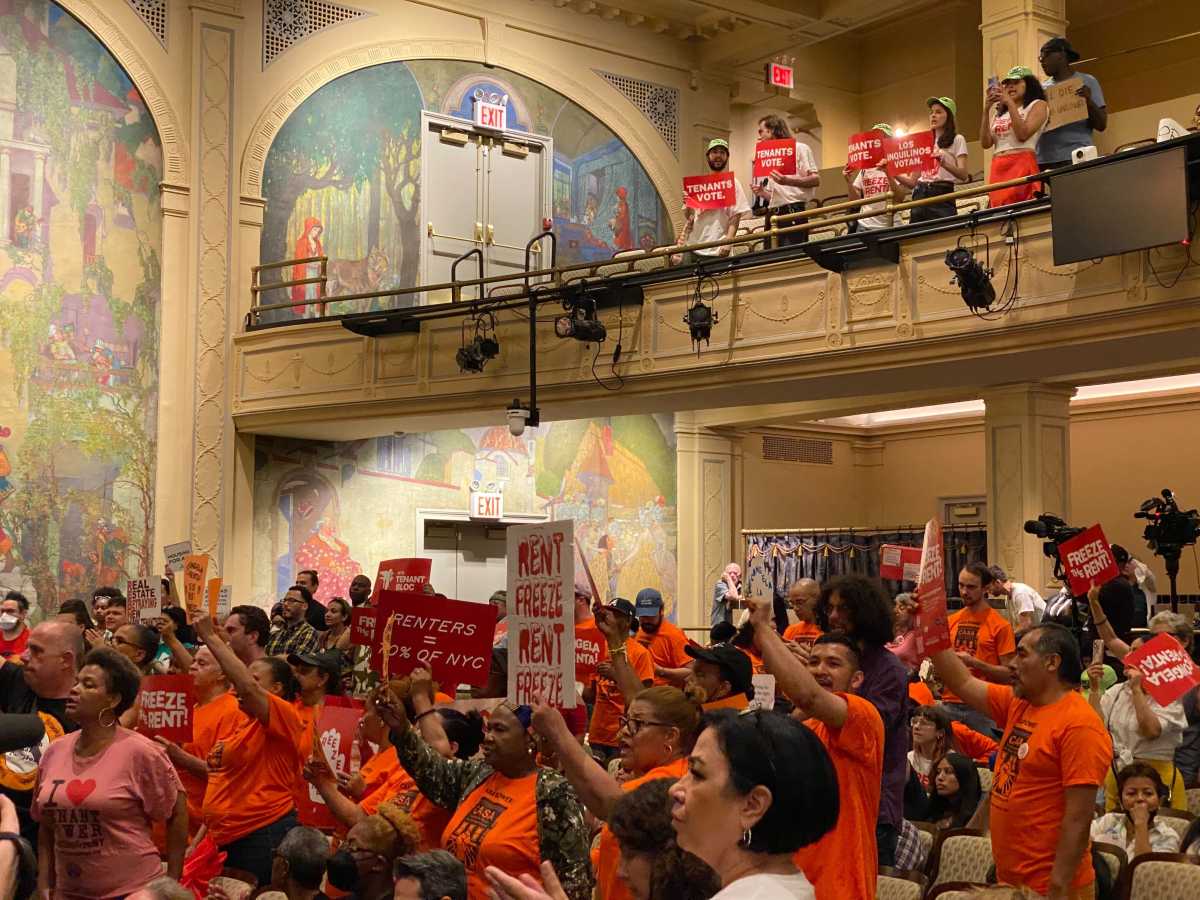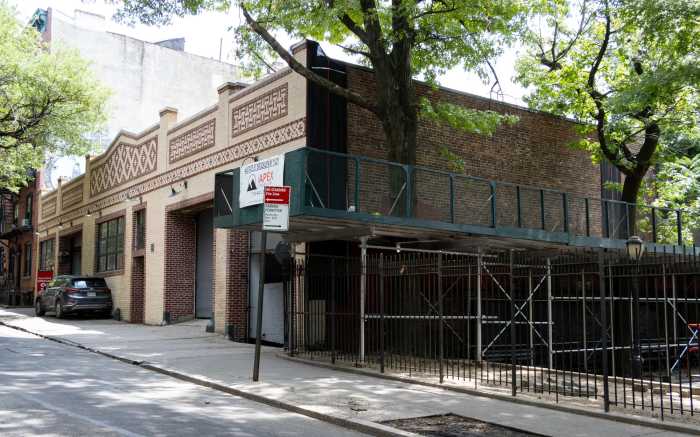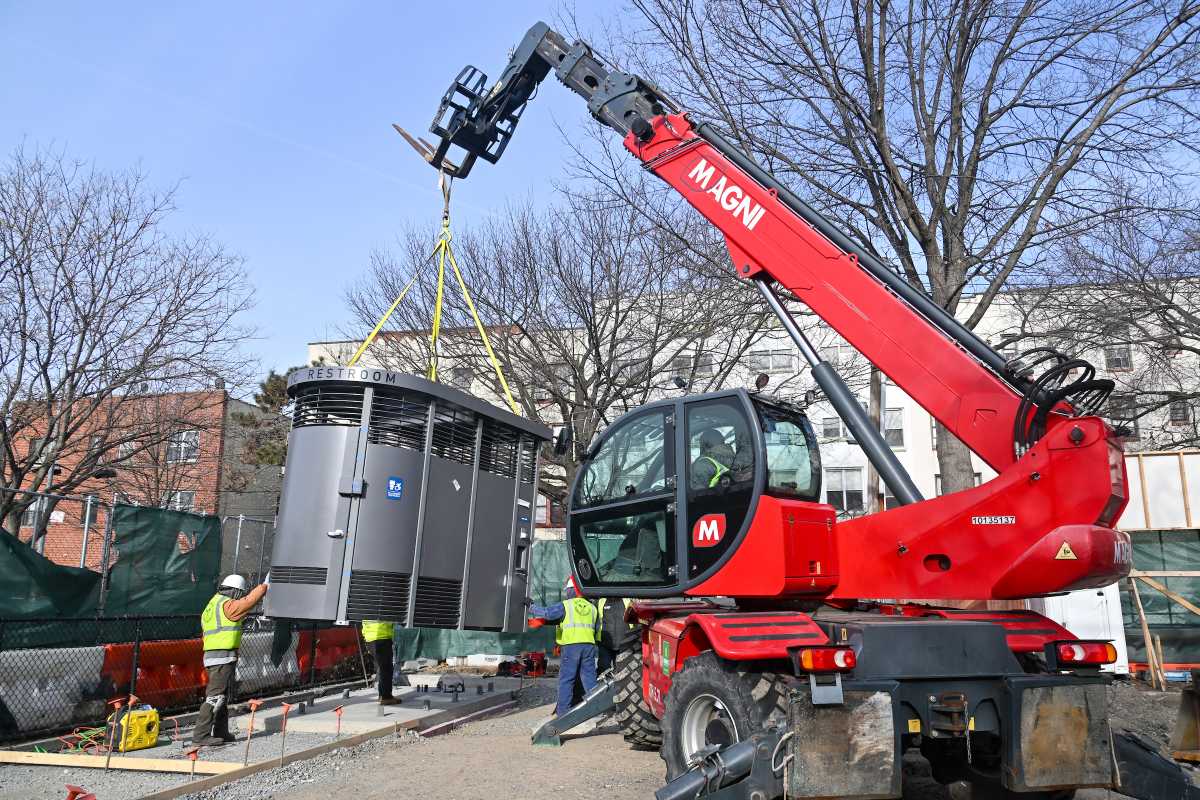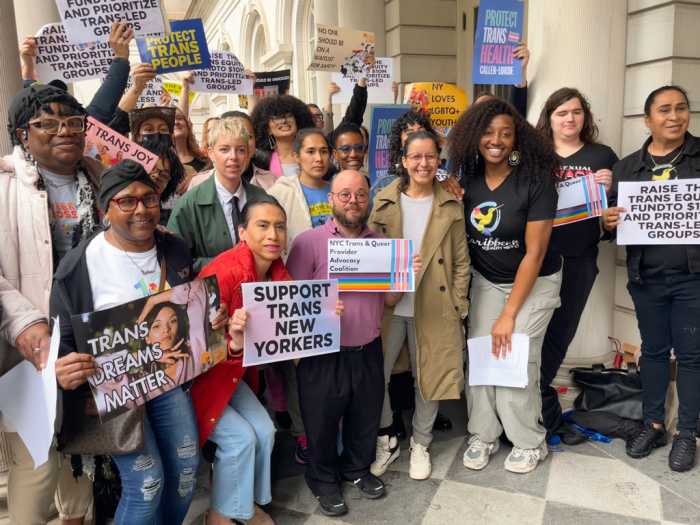A public meeting to discuss the Atlantic Yards project degenerated into
a shouting match that reopened Brooklyn’s class and race scars.
A mild-mannered update on Bruce Ratner’s proposed $3.5-billion arena
and residential project was quickly derailed when a black supporter and
a white opponent fought over differing notions of the “community”
that will be affected by the mega-development.
The fireworks began when panelist Candace Carponter of the anti-project
group Develop Don’t Destroy Brooklyn, told co-panelist Bertha Lewis
of the Association of Community Organizations for Reform Now [ACORN] that
DDDB supported development that would benefit the “community.”
“What community are you talking about?” Lewis fired back, telling
Carponter that her group’s opposition to the project ignores her
“community,” which is desperate for housing and jobs.
Lewis said ACORN cast its lot with Ratner because of the affordable housing
promised by the developer, but Carponter said Lewis was ignoring the larger
consequences of the project, such as environmental impacts and secondary
displacement that the Frank Gehry-designed apartments and arena would
create.
“It’s not necessary to build an arena to create affordable housing,”
Carponter said.
But Lewis attacked Carponter for waging a theoretical battle with Ratner
rather than worrying about poverty that actually exists.
“You talk about the environment,” Lewis said. “I don’t
about all that. I know about housing.”
Lewis added ACORN, a housing advocacy group, could find common ground
with DDDB if the anti-Ratner group would fight other area developers,
too.
“There are 49 developers in central Brooklyn,” Lewis said. “Ninety-one
percent of what they are building is luxury. Pick on them, and I’ll
be down with you.”
Lewis said that Atlantic Yards accounts for virtually all of the 9 percent
that’s not luxury housing.
Lewis is forbidden to speak negatively about the project as part of a
deal between Forest City Ratner and ACORN.
That deal also required Ratner to set aside half of the Atlantic Yards’
residential units as affordable housing. But since the contract was signed,
Ratner has added 2,800 market-rate condos to the plan, a change that dropped
the percentage of affordable housing to 40 percent.
Lewis said she believes Ratner will raise the number of affordable units
to keep the percentage at 50.
If he fails to build the required units of affordable housing, Ratner
must pay $500,000 in damages to ACORN and other groups, said New York
University law professor Virginia Been.
“Of course, that’s nothing for this kind of project,” said
Been, who was the third, and less-explosive, member of the panel, which
was sponsored by Women in Housing and Finance, a networking group for
professionals who work for, and do business with, the city.”
























